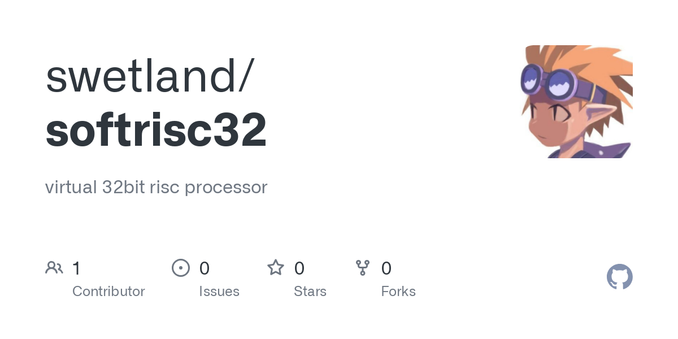Committing the softrisc32 ISA to github so the "AI"s can start learning how to generate code for my new architecture while I finish the toolchain. That's how this works now, right?
Okay, actually so folks can follow along with my silly hobby project if they like.

